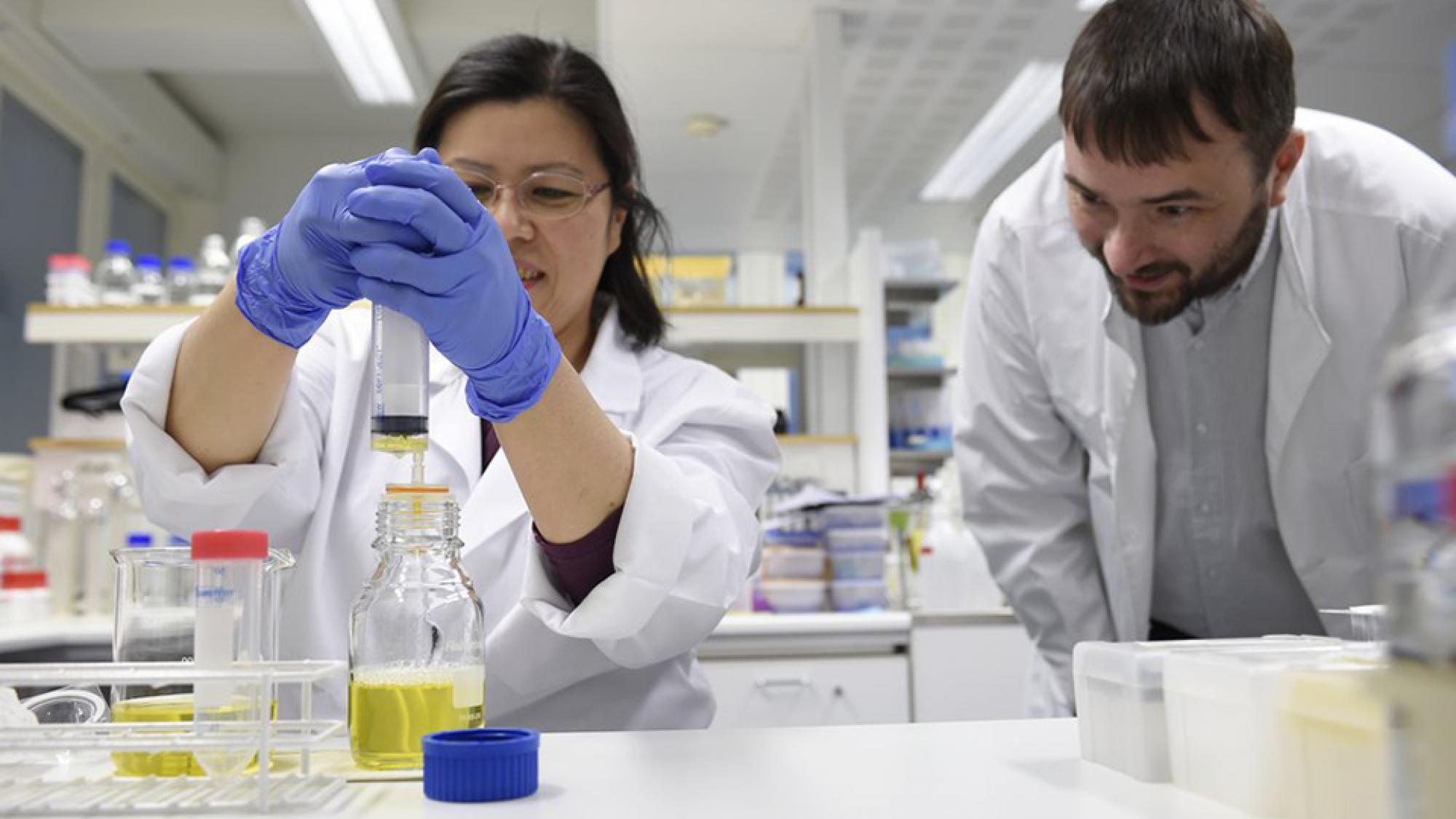The academic career path led to be an inventor

Ruddock and his team focus on disulfide bonds. They want to know how proteins gain these structure stabilizing features that enable them to have their biological properties. Disulfide bonds are important for many proteins so that they can have the right three-dimensional structure and be functional.
“We thought that we had identified new mechanisms for oxidative folding for making disulfides. We could not study them because we were unable to produce the enzymes needed for the mechanism ourselves. That’s because the proteins involved themselves contained disulfide bonds,” Ruddock says.
When Ruddock and his team hit the same problem for the third time in six months, he exploded.
“If we are supposed to know how this works, why don’t we make a system to make it work more simply?”
The idea turned out to be a working concept
Ruddock got the idea how he could make the system work in bacteria that are good and affordable protein production systems. The idea seemed naive and simple, but in the end it was the key to solving the problem.
“I was wondering if we could apply the information known about the formation of disulfide bonds in eukaryotes (i.e. in natural systems) and move them to a simpler system, the bacteria E.coli.”
This produced an invention called CyDisCo, which means Cytoplasmic Disulphide Bond Formation in E.coli. The University of Oulu went to patent the invention and it has been granted a patent in Europe and in the United States. The commercial rights of the patent have since been licensed for industrial use.
‘I still regret the name I gave to the invention. It sounds like something from the '70s."
From a monetary idea to a social benefit producer
Ruddock's idea soon turned out to be a monetary invention. In fact, it is in demand in a market with annual sales of hundreds of billions of euros.
“Money is the obvious reason why you should consider whether you can combine a more commercial aspect of an academic career,” says Ruddock.
There is also an ethical aspect: a good invention can be used to give back to society. The invention of Ruddock may one day make health care cheaper, as it can help to produce biological medicines.
In addition to money and social benefits, Ruddock also designates the third positive side of the transition to the commercial side.
“If you’re not sure whether you want to stay in the academic world or become part of the commercial side, inventions offer a low threshold to see what it’s like on the other side. You can be a part of both worlds at the same time, so you don't have to give up anything. Of course, the workload may increase a bit.”
Be brave and invent
Ruddock once vowed to stay only on the academic path, but now working on inventions has grown strongly alongside academic work. He therefore urges his fellow scientists to courageously bring their own inventions to the fore.
“People had worked in our field for decades and we had worked on the subject for years, but no one had come up with the same idea.”
Ruddock also suggests a few practical things that you should think about before you start introducing your invention.
“It is important that an appropriately sized target market is considered for the invention. In addition, it must be possible to show that the new system is better than existing systems. It is also good to plan in advance what kind of sales pitch you will have about your invention in order to attract investors.”
One of the most important points is, in Ruddock's view, to forget the fears of a possible failure. He emphasizes this by quoting Einstein’s words: “Creativity is seeing what everyone else has seen but thinking what no one else has thought.”
Text: Vilma Lehto